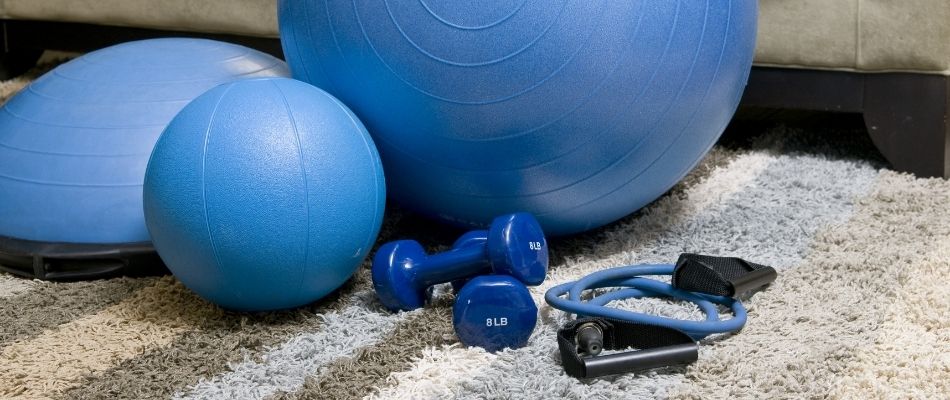We live in a world where sitting is the norm. We sit at our desks at work. We sit on the couch to watch video content. We sit and scroll through our mobile phone to catch up on news. We sit in the car, train or bus going to and from work.
The Covid-19 pandemic has led to us spending more time at home, which has resulted in more time sitting down. We seem doomed to a sedentary lifestyle, characterised by much sitting and little physical exercise, unless we take the time and put in the effort to correct these bad habits.
A sedentary lifestyle is a major risk factor for cardiovascular disease. It increases the chance of having a heart attack or experiencing a different cardiac event, such as a stroke, and increases the possibility of needing heart bypass surgery. Being inactive can negatively affect your health. It slows down the body’s metabolism and affects its ability to regulate blood sugar and break down body fat.
Cardiovascular and aerobic exercise
This is where cardiovascular exercise comes in. Cardiovascular exercise is any movement that increases your heartrate to improve the body’s oxygen flow. It can take the form of lower impact activity such as walking, cycling, swimming or rowing. Or it can be much more intensive. Cardiovascular endurance exercises examples include running, sport or gym work.
Aerobic exercise is any activity that gets your blood pumping and large muscle groups working. It’s also known as cardiovascular activity. Cardiovascular exercise reduces total body fat, resulting in reduced waist and hip circumference, which are important markers of health. Biologically, it improves the heart’s fitness and its ability to supply oxygen-rich blood to the muscles, allowing them to produce movement.
And there is more good news: cardiovascular exercise increases HDL (high-density lipoprotein, (the “good” cholesterol) and decreases LDL (the “bad” cholesterol). Left unchecked, cholesterol builds up within the walls of your blood vessels, narrowing the passageways and leading to a heart attack or stroke. Increasing your HDL lowers the risk of heart disease, can improve blood glucose control and assist with weight loss. Both of these factors lower the risk of a heart attack.
Medical experts recommend that healthy adults need about 30 minutes of moderate intensity activity for 5 days a week. If you do more intense exercise, you will need to devote less time to exercise. It’s also useful to combine some muscle training in the gym with your cardiovascular training.
Consult your doctor before you embark on an exercise programme. This should include a programme of unique activities designed for you as well as what your target training heartrate should be. Your target heartrate is 50 to 85 percent of your maximum heartrate. It’s the level at which your heart is beating with moderate to high intensity.
 Ways to include exercise in your daily life
Ways to include exercise in your daily life
For most of us, the big challenge is to get up and get moving. There are many ways to include exercise into our daily lives. Here are some easy ways to start:
• Go for a walk while listening to educational podcasts. In this way you will benefit both your mind and your body.
• Use the stairs instead of the lift.
• Park further away from your supermarket entrance when you go shopping. A little extra walking will take no time, but will give great benefits.
• Take a short walk during your lunchbreak.
• Walk to your co-workers’ workstations, rather than send them an email.
• Walk on the spot while watching TV.
Benefits of cardiovascular and aerobic exercise
If you sincerely want to improve your health, you will find a way. And there are many reasons why you will want to get more exercise, because of the effect of exercise on cardiovascular system.
Here are some of the benefits:
1. Improves cardiovascular health
One of the benefits of aerobic exercise is that it strengthens your heart and helps it pump blood more efficiently throughout the body. It helps to lower blood pressure, and as we learned earlier it does good things to your cholesterol. You can easily do aerobic exercises at home.
2. Lowers blood pressure
Cardiovascular exercise helps you manage high blood pressure. Exercise can help lower blood pressure, but check first with your doctor.
3. Helps regulate blood sugar
Regular physical activity helps regulate insulin levels and lower blood sugar, all while keeping body weight in check, another valuable way in which activity contributes to health.
4. Reduces asthma symptoms
Aerobic exercise can help people with asthma lessen both the frequency and severity of asthma attacks. Talk to your doctor before beginning a new exercise routine if you have asthma.
5. Reduces chronic pain
Low-impact cardiovascular activities like swimming can relieve chronic back pain.
6. Aids sleep
A good cardiovascular workout sets you up for good sleep at night. Exercising too close to bedtime may make it more difficult to sleep, however. Try to finish your workout at least two hours before bedtime.
7. Regulates weight
It goes without saying that cardiovascular exercise helps you lose weight and keeps it off. If you cut calories in addition to aerobic exercise, you can reduce the amount of exercise needed to lose the same amount of weight.
8. Strengthens immune system
Regular and moderate aerobic exercise increases certain antibodies in the blood called immunoglobulins. That ultimately strengthens the immune system.
9. Improves brain power
Aerobic exercise may slow brain tissue loss and improve cognitive performance. Aerobic exercise is good for your body and brain.
10. Boosts mood
Moving your body may also improve your mood and reduce symptoms of depression. These results suggest that engaging in exercise, even for a short period of time, may have a big impact on mood.
Although the effect of an exercise regimen on any single health risk factor may generally be small, the effect of continued, moderate exercise on overall cardiovascular risk, coupled with other lifestyle modifications, such as proper nutrition and stopping smoking, can be beneficial to your health.
What are you waiting for? Get out there and get moving!
Read also:







